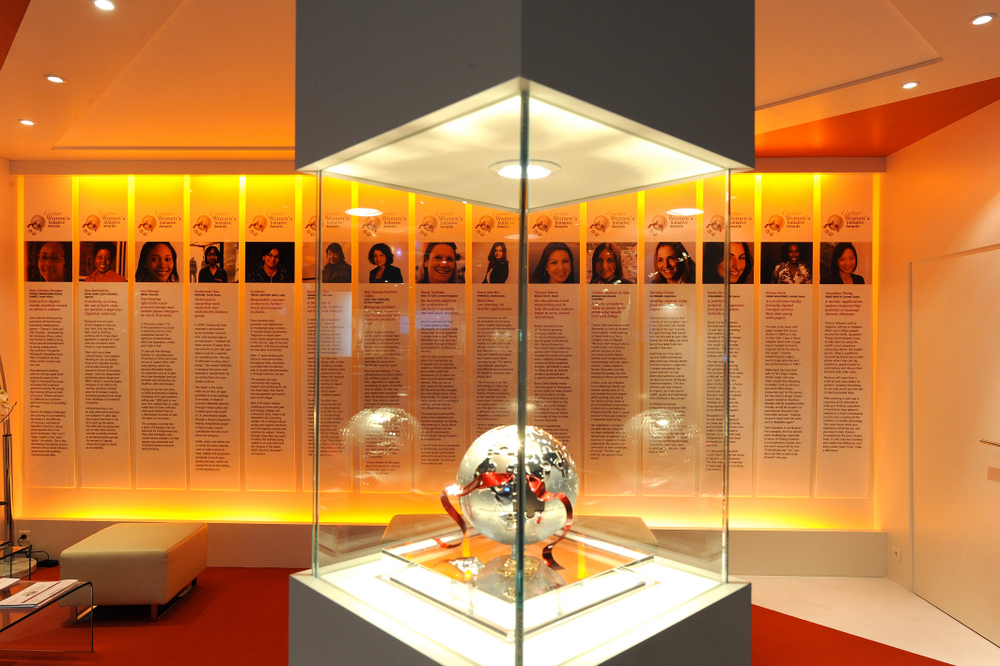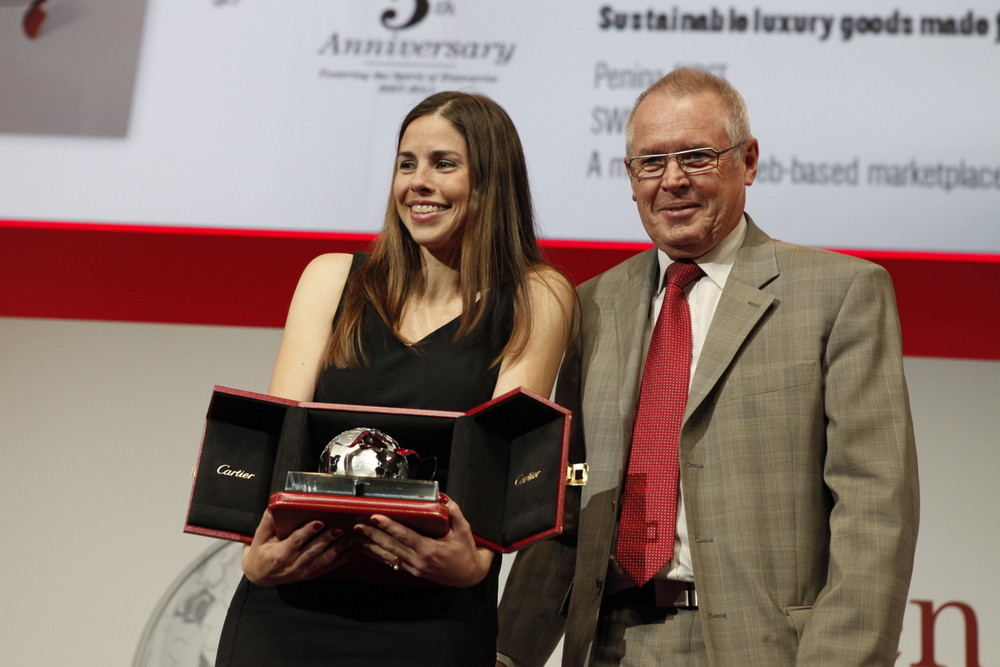
Christine Borgoltz, corporate communications director of Cartier International, details the jeweller's commitment to female entrepreneurship and social responsibility
Christine Borgoltz, corporate communications director of Cartier International, details the jeweller’s commitment to female entrepreneurship and social responsibility.
“In one way or another way, all luxury brands are giving to charities,” begins Christine Borgoltz, corporate communications and public relations director of Cartier International and an instrumental figure in the launch of the Cartier Women’s Initiative Awards. “But we don’t like to talk about it because we feel it is normal.
“Giving back to the community is a necessity. It’s not so much a question of needing to donate to move forward with selling jewellery. It’s a question of being part of society and life – it shouldn’t be a justification.”
Such has been the attitude of Cartier since 2006, when the brand officially set out its corporate responsibilities and guiding principles in a dedicated charter. In the six short years since officiating its commitment to social, environmental and ethical responsibilities, the brand has launched and supported a diverse range of programs.
“ Cartier has been around for more than 150 years, we have 300 stores in the world, across all five continents. We are international and we have to be respectful ”
LOVEDAY was launched in 2006, as an annual event during which the whole of Cartier’s global staff is involved in supporting charities that work predominantly to help children.
The manufacturer is also a founding member of the Responsible Jewellery Council in 2005, in a bid to encourage colleagues, partners and suppliers to improve ethical practices throughout the jewellery industry, from mining gold and stones to distribution. Cartier itself completed certification in 2010 and remains a presence on the board and the executive committee.
Cartier boutiques, headquarters and manufacturing locations go through a continuous optimisation process to reduce environmental footprint. Boutiques have been fitted with custom LED technology to reduce energy consumption. All press and service materials are printed on paper sourced from responsibly managed forests. Issues of waste management, CO2 emissions and use of water, gas and electricity have also been addressed at manufacturing sites.
Yet the brand has escaped the categorisation as a one-dimensional ‘green’ brand. It does not necessarily conjure the same ideas that a mention of Stella McCartney or Edun will, when it comes to corporate social responsibility. Consumer marketing makes little mention of the depth to which Cartier is engaged with its global community.

The Cartier booth at the Women’s Forum Global Meeting in Deauville, 2010 (Copyright: Cartier)
Instead, the essence of luxury at Cartier is inherently associated with not only the quality of manufacturing and retailing, but quality of life for those that contribute to the manufacturers community. “What would the most beautiful piece of jewellery be if you weren’t 100% sure that the diamonds in it had not been used to bankroll ethnic conflicts?” confirms CEO and president Bernard Fornas.
“There is charity and there is action, which is not philanthropy,” explains Christine Borgoltz. “Action for Cartier is not about marketing, it is a credible commitment to a cause. Of course there is communication around our initiatives, so the brand of course benefits from press and awareness, but at Cartier we always want to be involved in projects in the long-term. Step by step we want to grow, we want to go further, and give more and more to the communities in which we exist.”
Pioneering has always been a deliberate part of Cartier’s spirit and strategy. The brand has persistently defended its position ahead of the curve, from the launch of the Fondation Cartier pour l’art contemporain as early as 1984 to its founding member status with the Responsible Jewellery Council.
“ There is charity and there is action, which is not philanthropy. Action for Cartier is not about marketing, it is a credible commitment to a cause ”
The launch of the Fondation Cartier was both an unprecedented and audacious move for a luxury brand, at a time where few competitors were willing to support young artists whose reputations had not yet been established. Many modern parallels can be drawn with the Cartier Women’s Initiative Awards.
Where the beneficiaries were once unknown contemporary artists, they are now under-financed female entrepreneurs. Where the showcase was once the Fondation, it is now the annual Women’s Forum in Deauville.
“Cartier is a female enterprise, there are a lot of women at Cartier and they are our main customers. We were approached by the Women’s Forum in France to becoming involved, which is an opportunity we obviously wanted to pursue, but not in the capacity of a sponsor.
“We really wanted to create a specific initiative on a long-term basis, like the Fondation Cartier pour l’art contemporain. To me it’s the same spirit, in what we can achieve for the women – it is not philanthropy – it’s a long-term partnership, where we give these women the chance to realise their own project, to achieve international visibility. Like we have done for over 25 years with our artists."

Kresse Wesling, 2011 Laureate for Europe and John Dickinson, Jury member for Europe (Copyright: Cartier)
18 finalists convene for the evaluation of their presentation and business plan, based on each project’s creativity, financial sustainability and social impact. Six Laureates – categorised by geography – are awarded US$20,000 in funding, one year’s business coaching and further visibility and networking opportunities.
“Money is money,” clarifies Christine. “Building something and coaching someone is sometimes much more important. Once you become a finalist, you become part of our community of international women entrepreneurs, giving you valuable opportunities in terms of networking.
“Cartier has been around for more than 150 years and we have 300 stores in the world, across all five continents. We are international and we have to be respectful and represent excellence. This dedication to excellence does not only exist within the quality and craftsmanship of our creations but is also reflected in our philosophy and the way we operate”.
“ Money is money. Building something and coaching someone is sometimes much more important ”
It is surprising to learn that many entrants in the Women’s Initiative Awards come from countries in which there is no Cartier boutiques and no marketing. As a result, the competition was geographically diversified to recognise entries from the Middle East and North Africa in their own right.
“The event is energising, you can feel it. In the countries where there is essentially no presence, the interpretation of what Cartier is, is without any commercial relationship. Instead it becomes a comprehensive and very genuine interaction between people.
“The benefit of the Cartier Women’s Initiative Awards is much more to do with a sense of satisfaction and achievement, where we feel proud. There is of course press, but in a different way to that of the foundation and building an image, here it is more a reflection of Cartier’s core values.”
For other discussions with Luxury Leaders, please see our conversations with the following:
- Dr Ulrich Bez, CEO, Aston Martin
- Margareth Henriquez, CEO, Krug
- Robert Gaymer-Jones, CEO, Sofitel

